The new ‘Historic Venice’ tour takes in a range of fascinating buildings, art works, and areas of Venice, many of which are new to our tours. The photographs may serve as an appetite whetter for 2026!
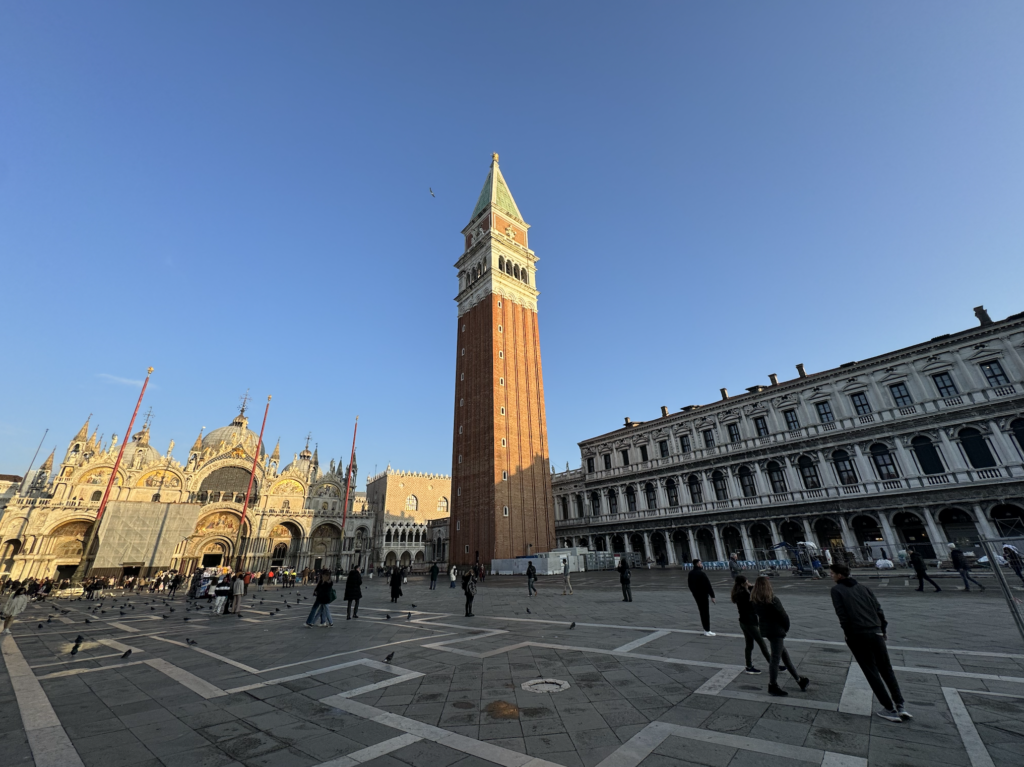
St Mark’s Square bathed in a warm January light.
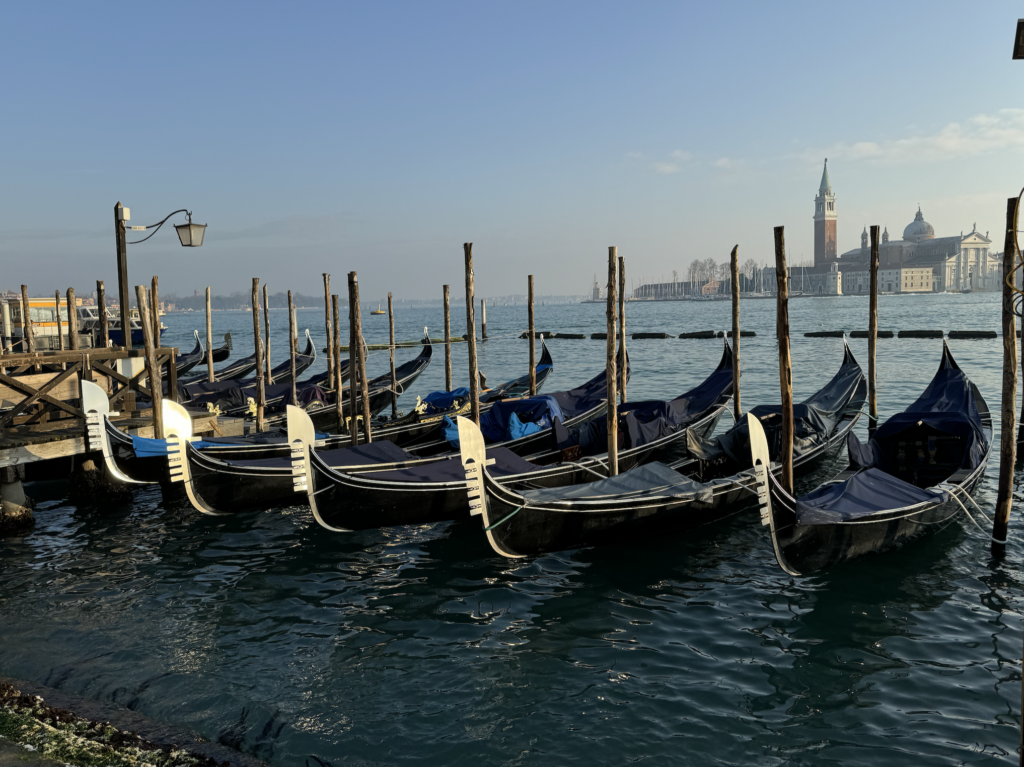
Gondolars bobbing on the water adjacent to the Piazzetta, the metal prows reflecting the last of the afternoon sun. The view over the water is towards island of San Giorgio Maggiore.
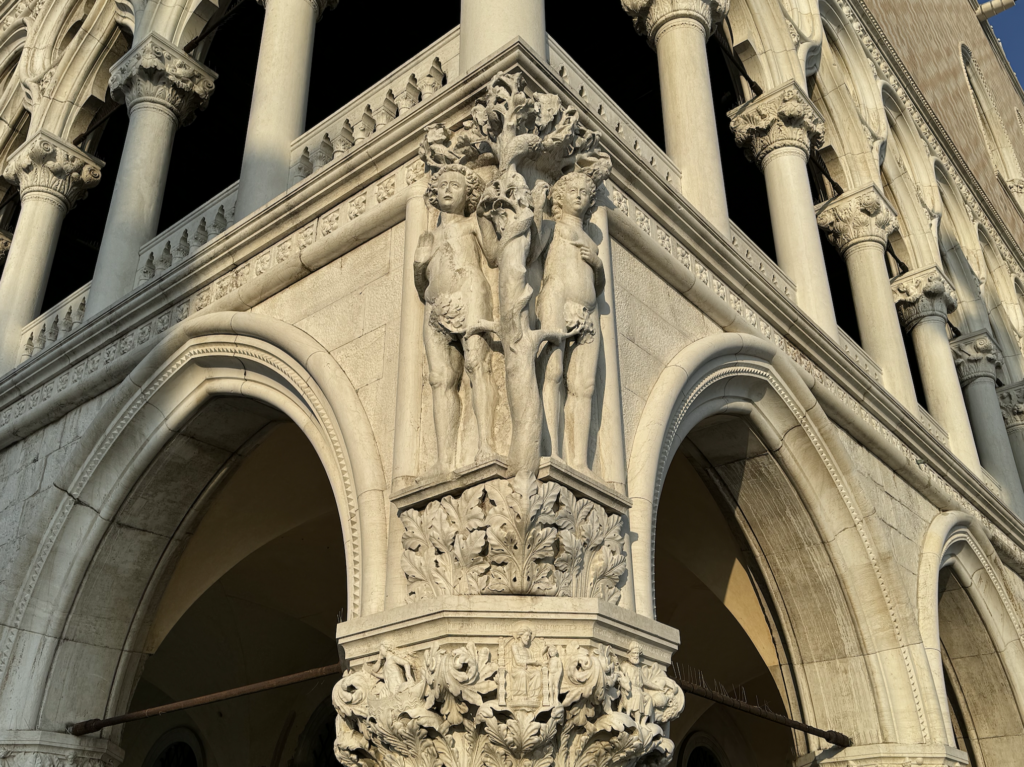
The nearby Doge’s Palace is decorated on the South Western corner with the figures of Adam and Eve in the Garden of Eden, sculpted in the 14th century. The original Eve counterpoints the ‘new’ Eve – the Virgin Mary – on whose feast day 25 March 421 AD Venice was founded.

View over the Grand Canal from the rooftop of the Fondaco dei Tedeschi, showing both Eastern and Western sides of the Rialto Bridge.
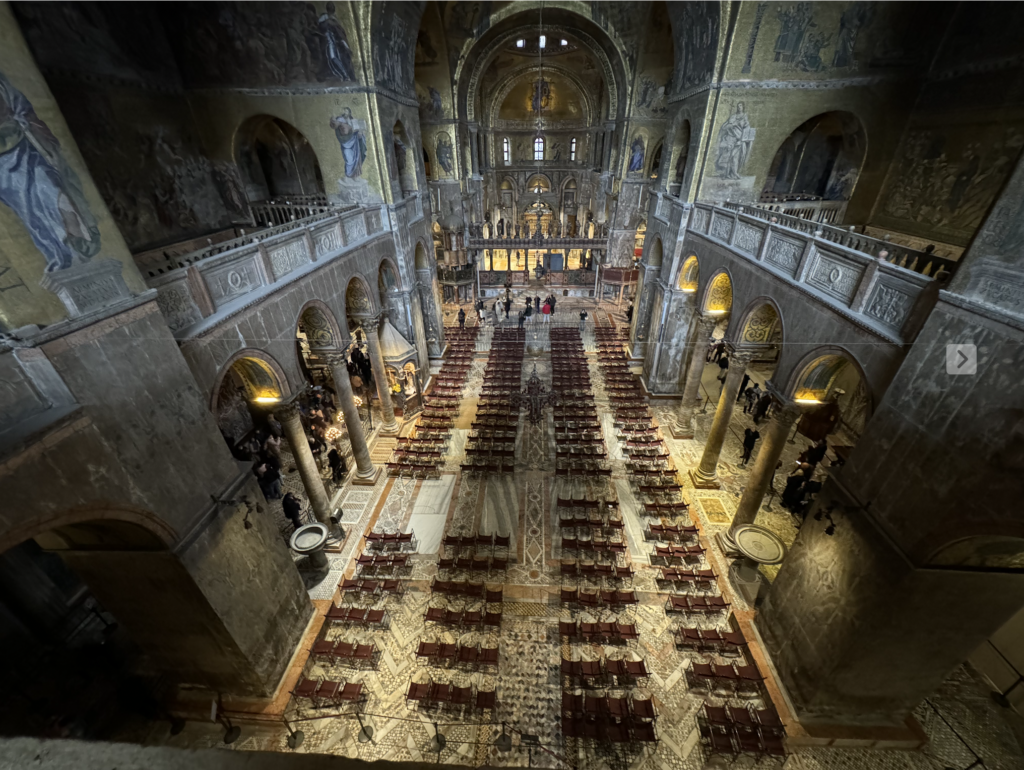
The Nave of St Mark’s Basilica seen from the Western Gallery that forms part of the museum for whch we have entrance tickets.
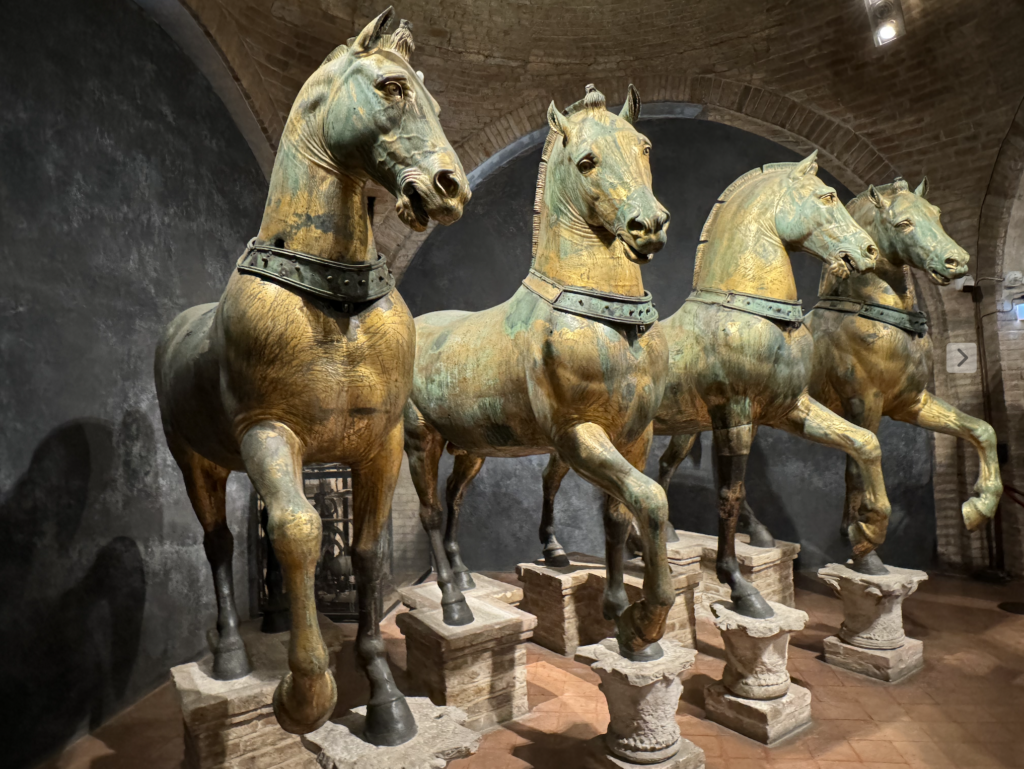
The Horses of Saint Mark’s Basilica, which are also known as the Triumphal Quadriga or Horses of the Hippodrome of Constantinople. The lifesize horses date from 2nd or 3rd centuries AD and were once placed on the Western facade of St Mark’s. Today they are housed in the basilica’s museum.
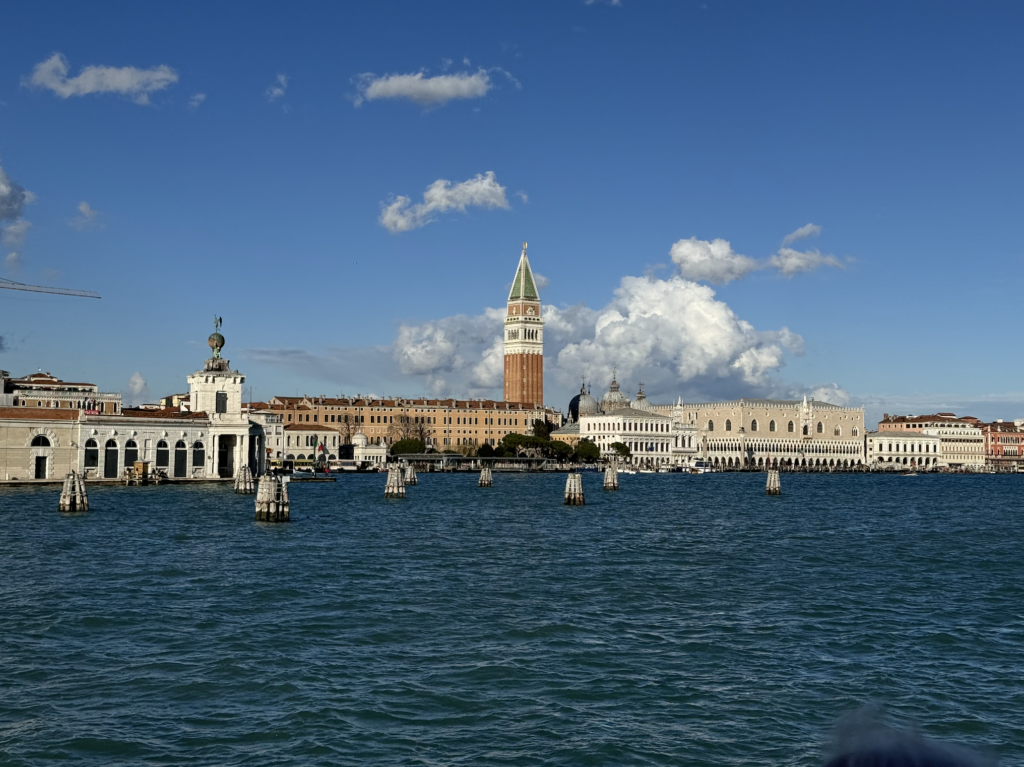
One of the afternoons on the tour is given over to a two hour private boat tour of some of the highways and open waters in and around Venice. From the open deck we will be able to view – among other sights – the Giudecca, the 16th century Ospedale degli Incurabili, the Cipriani Hotel, the island of San Lazzaro degli Armeni, the Lido, and the Arsenale.
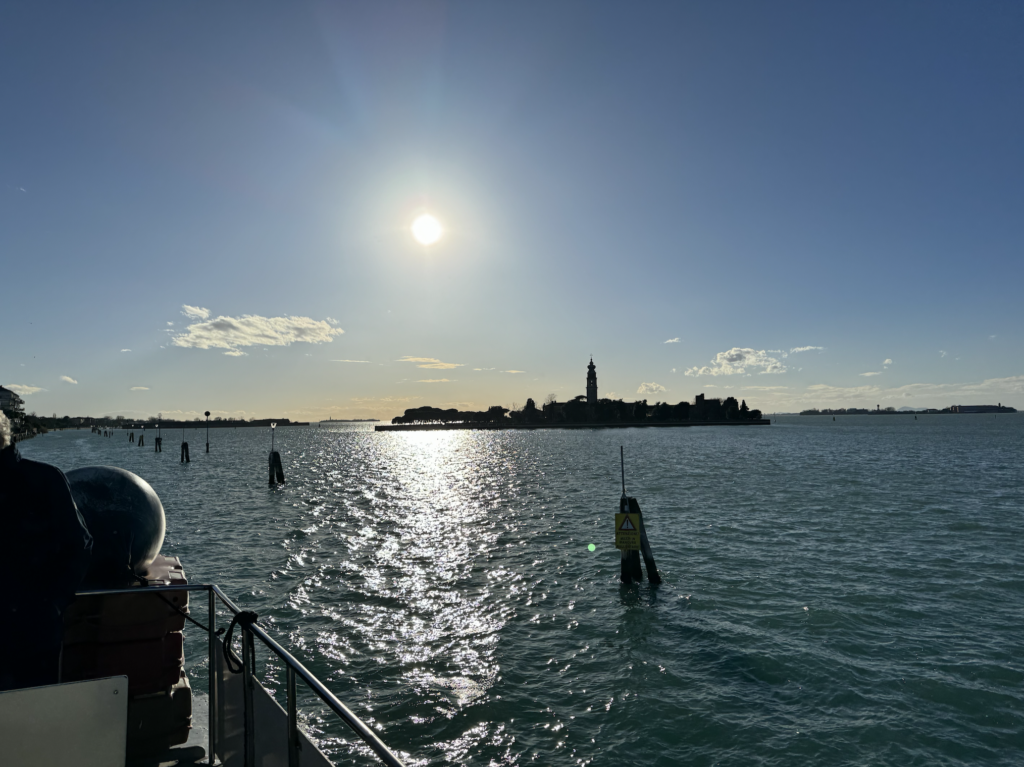
The island of San Lazzaro degli Armeni.
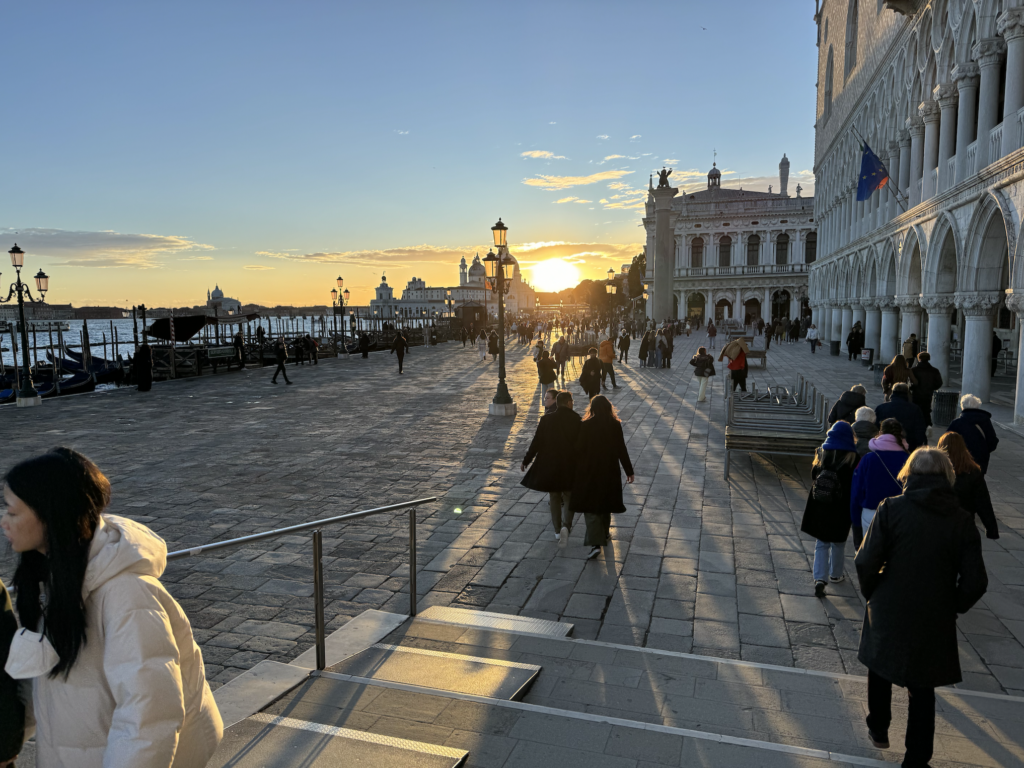
While it can never be guarenteed, the weather in Venice in January tends to be on the optimistic side, often with clear days and long sunsets
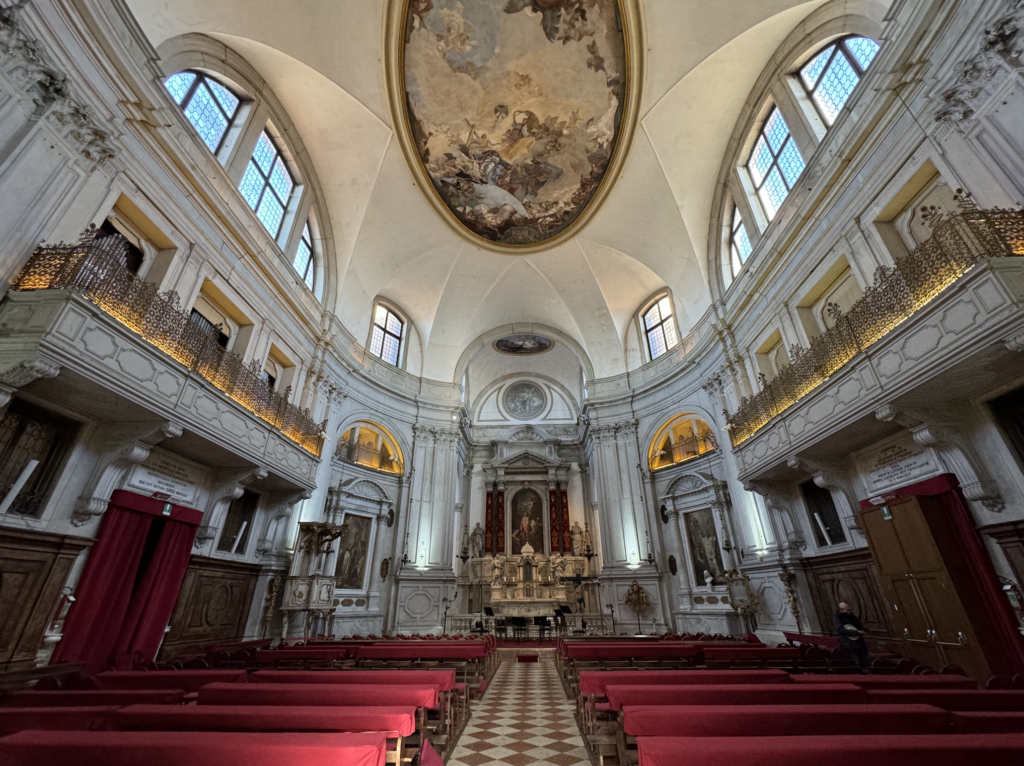
One of our days in Venice is spent exploring three of the four surviving orphanages in the city. The photograph above shows the chapel of the Ospedale della Pietà, the foundation closely associated with the teachings and music of Antonio Vivaldi. The children performed their music in the upper galleries, hidden from view by the iron railings.
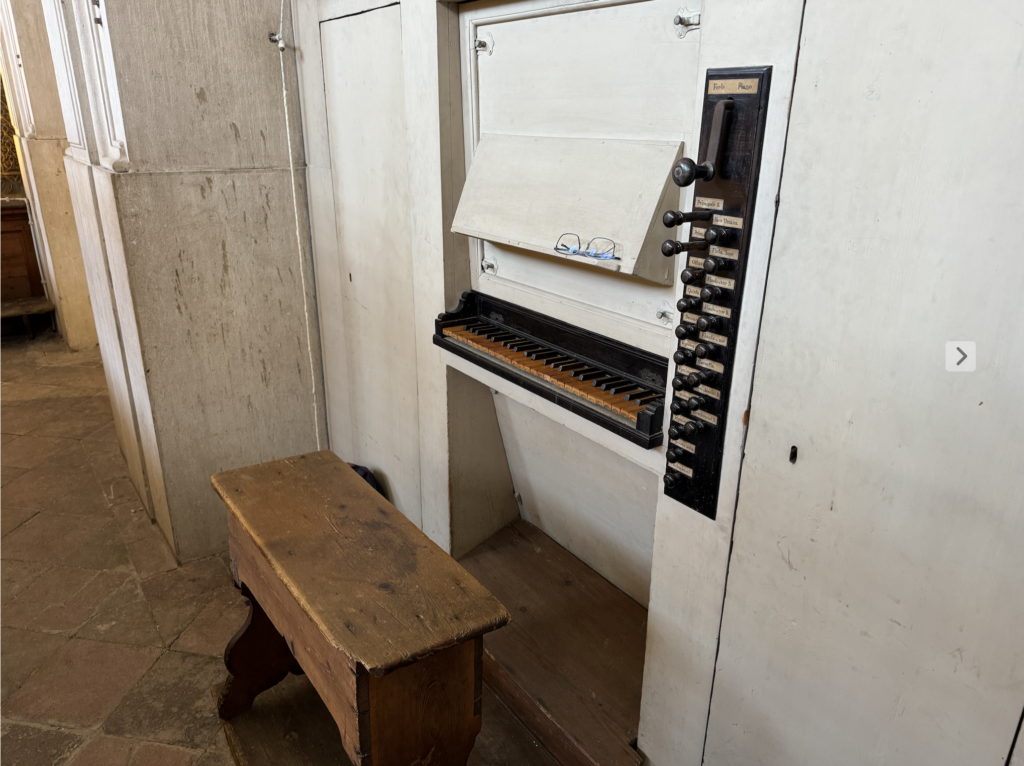
The organ in the chapel of the Ospedale della Pietà. The organ dates from the 18th century and was designed by the great Veneto builder, Pietro Nachini. The modest single manual and the absence of pedals belies the magnificent tone of the instrument which rings magnificently in the accoustic of the ovular shaped chapel. Peter will give a recital on the organ.

Our explorations of the orphanages continues with a private visit to the Ospedale dei Derelitti, where an equally beautiful chapel supplied the venue for the orphaned children’s performances. Tthe performers were placed in a gallery positioned over the high altar. The railings which obscured them from sight are just visible in the photograph.

The Ospedale dei Derelitti possesses a very beautiful music room dating from 1776 and designed by Matteo Lucchesi. The end wall displays a fine mural by Jacopo Guarana, entitled ‘Concerto delle Putte’.
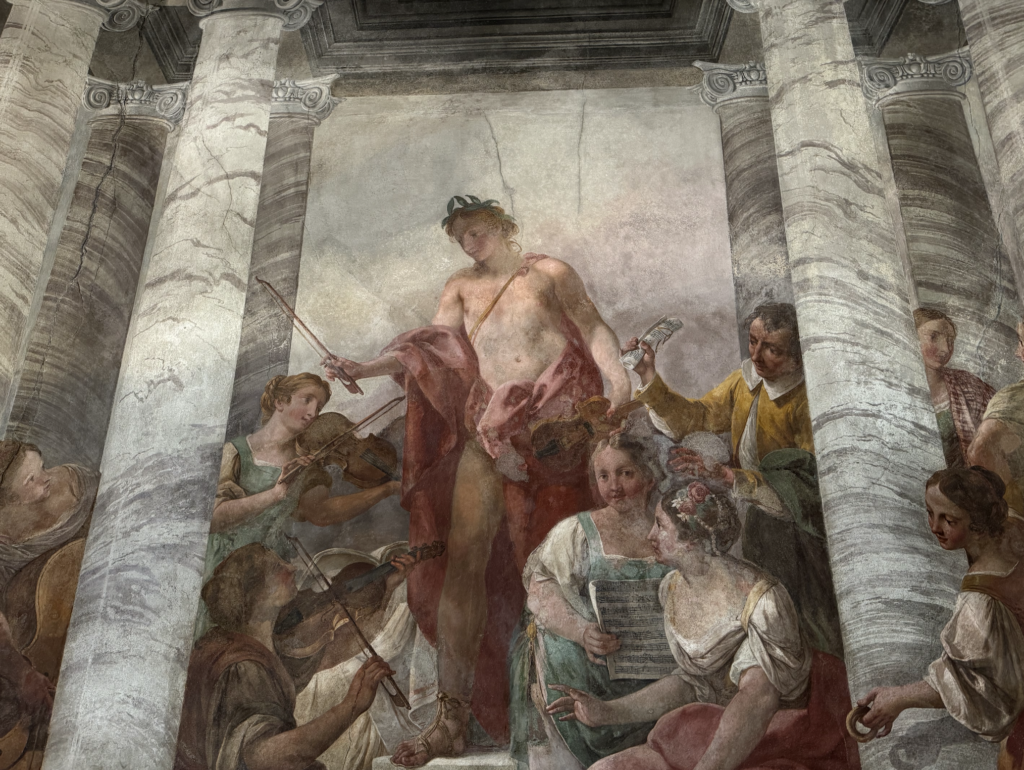
A detail of the mural by Jacopo Guarana, entitled ‘Concerto delle Putte’

Statues in the courtyard of the Ospedale dei Derelitti
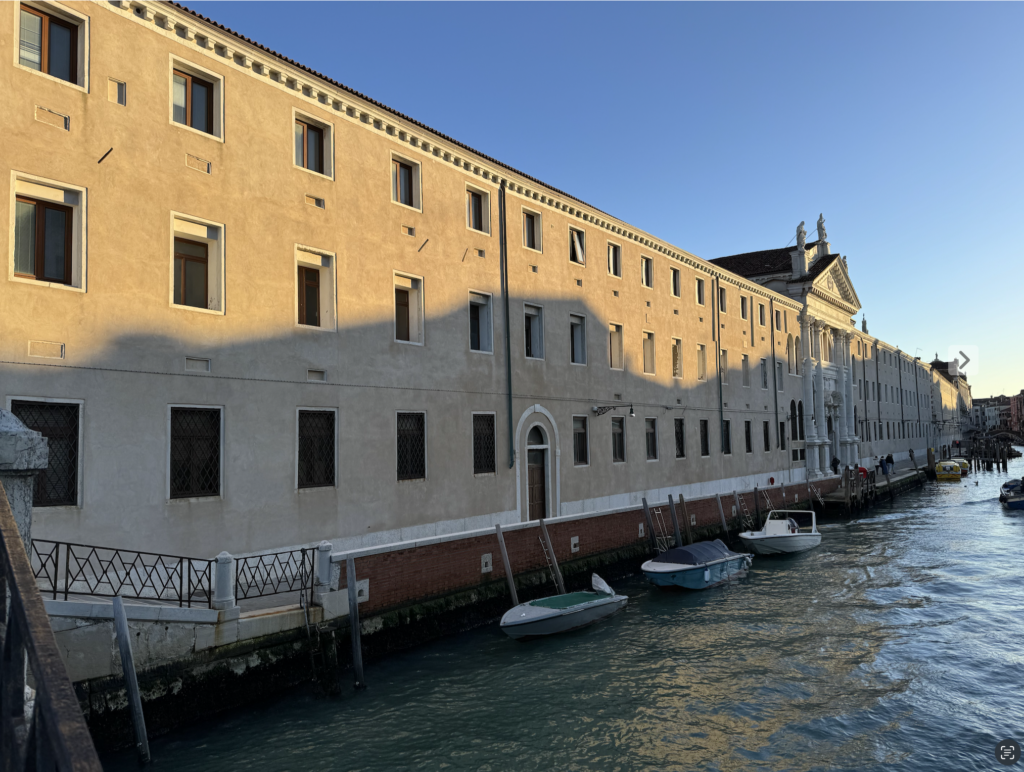
The day concludes with a visit to the Ospedale San Lazzaro dei Mendicanti where we visit the chapel designed by Vincenzo Scamozzi and Giuseppe Sardi, key architects in Venice’s buildings’ history. The Mendicanti orphanage was located behind this very impressive facade which follows the line of the canal known as Rio Mendicanti.

The chapel of the Ospedale San Lazzaro dei Mendicanti .
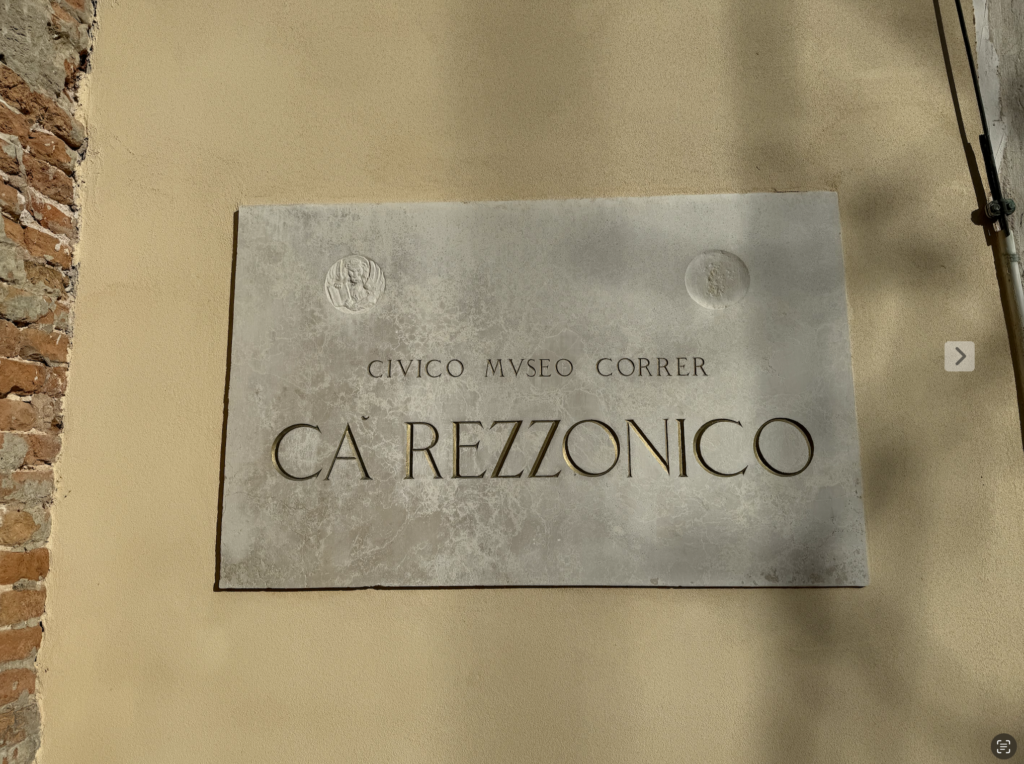
Our tour includes a private tour of the museum on the Grand Canal known as the Ca’ Rezzonico. Here we will view the glorious pastels by the Rococo painter, Rosalba Carriera. We also discuss the grisly painting of Orpheus and the Bacchantes (not for the faint hearted!).
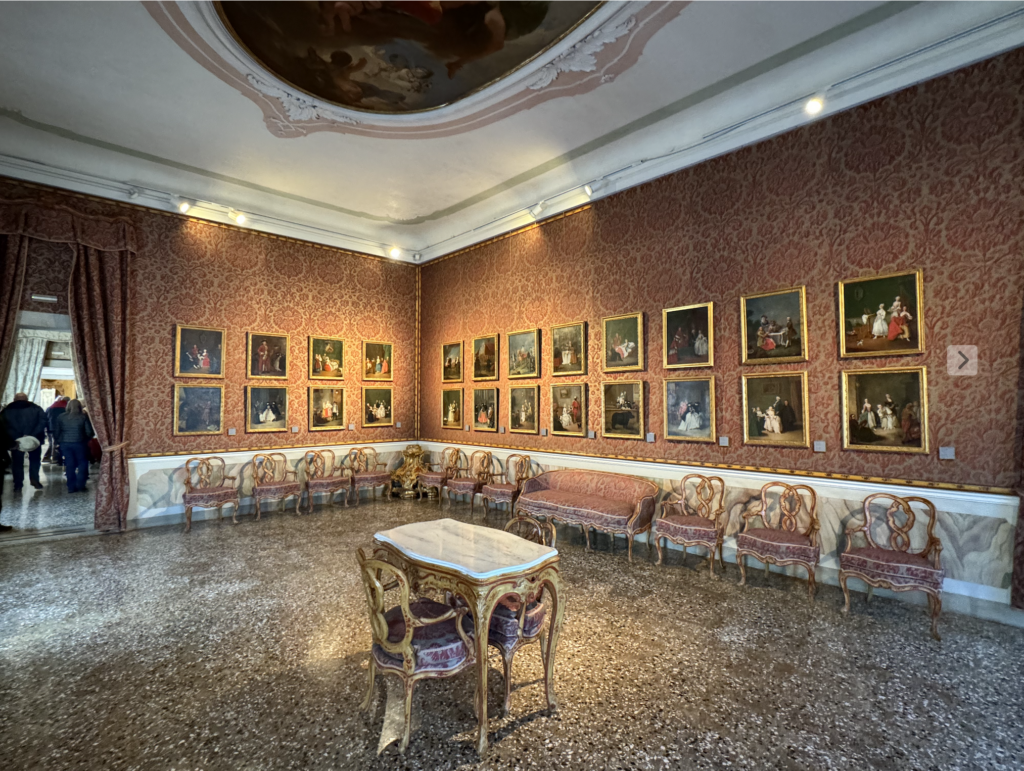
At the Ca Rezzonico, we will also have a chance to view the magnificent collection of paintings by Pietro Longhi that reveal the wide range of social activity in mid 18th century Venice.
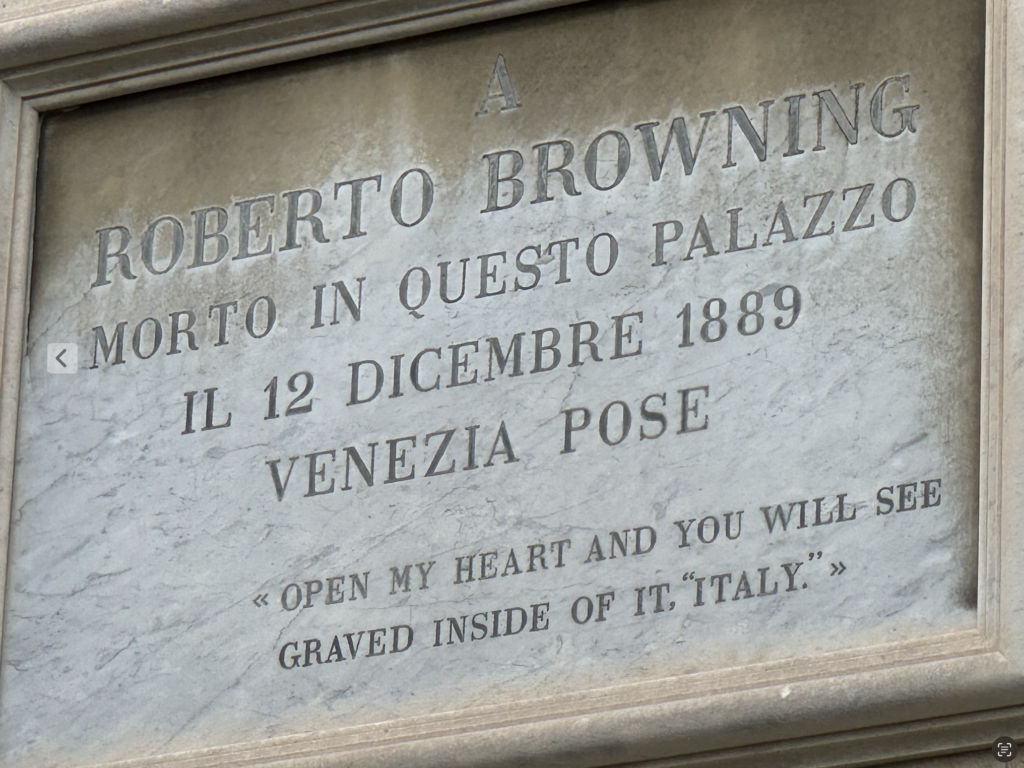
Also at the Ca Rezzonico, the sharp-eyed will spot this charming tribute to Roberto Browning!
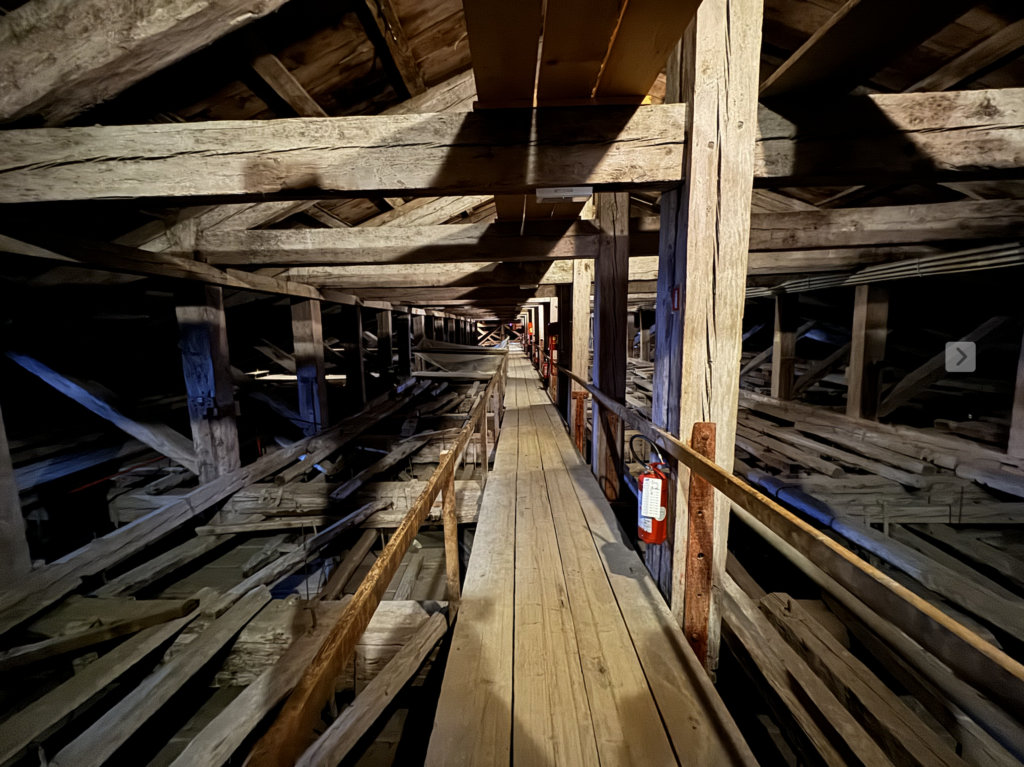
One of our mornings will be spent on a private tour of the Doge’s Palace. The two hour tour takes in parts of the building not seen by most visitors. Above, for example, is a photograph of the interior of the roof, looking like an inverted structure for a vast sailing ship.
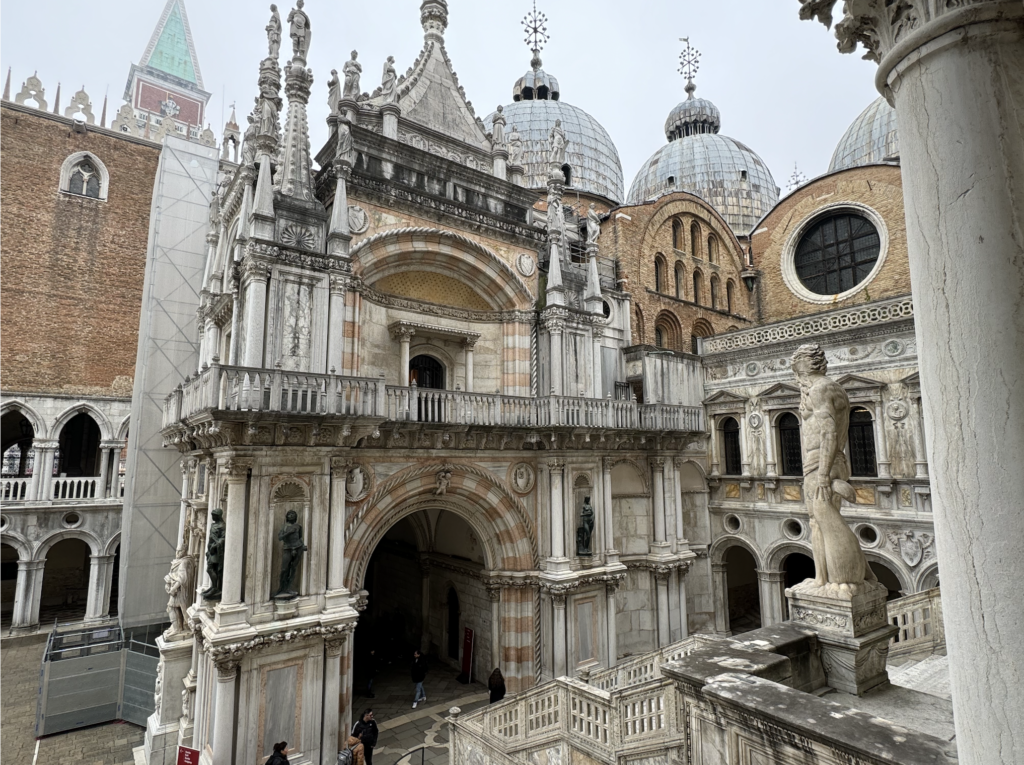
The Doge’s Palace looking towards the domes of St Mark’s Basilica.
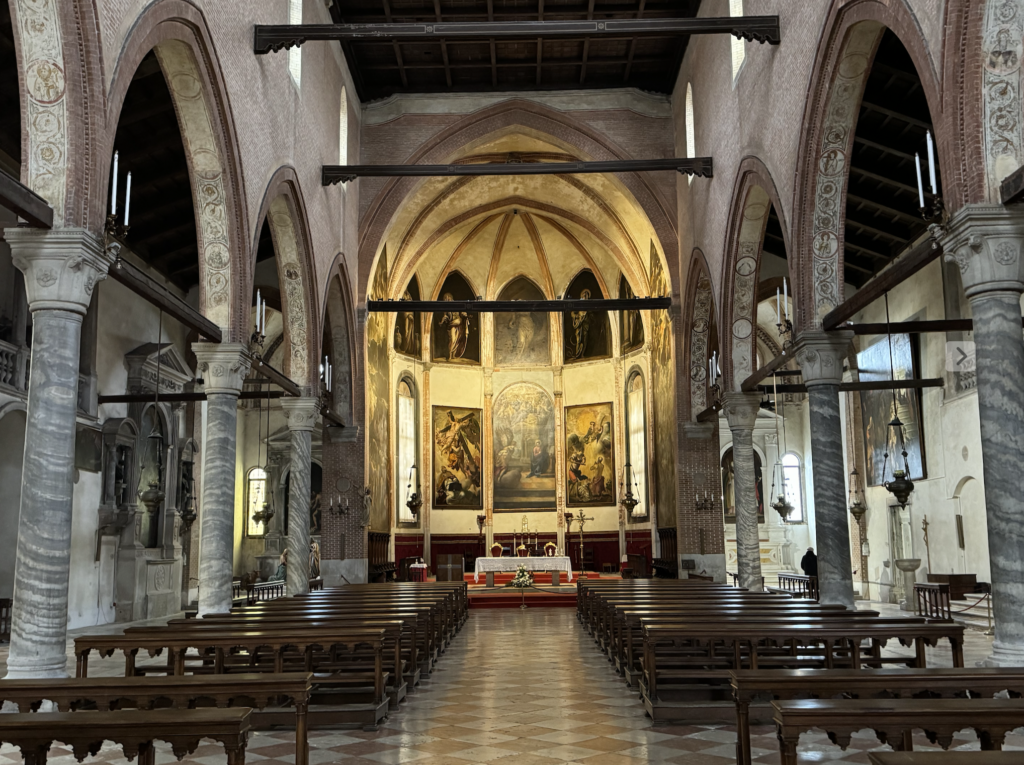
We also visit the Church of the Madonna dell’Orto, with its magnificent collection of large paintings by Tintoretto.

ANother of our mornings will be spend a morning in the Music Conservatoire, which is housed in the Palazzo Pisani – the largest patrician palace in Venice.

A guided tour by the conservatoire’s ambassador includes the viewing of two original manuscripts by Vivaldi.

We end our time in the music conservatoire with a recital by Peter and Davide – a postgraduate student – playing the twin organs in the concert hall.
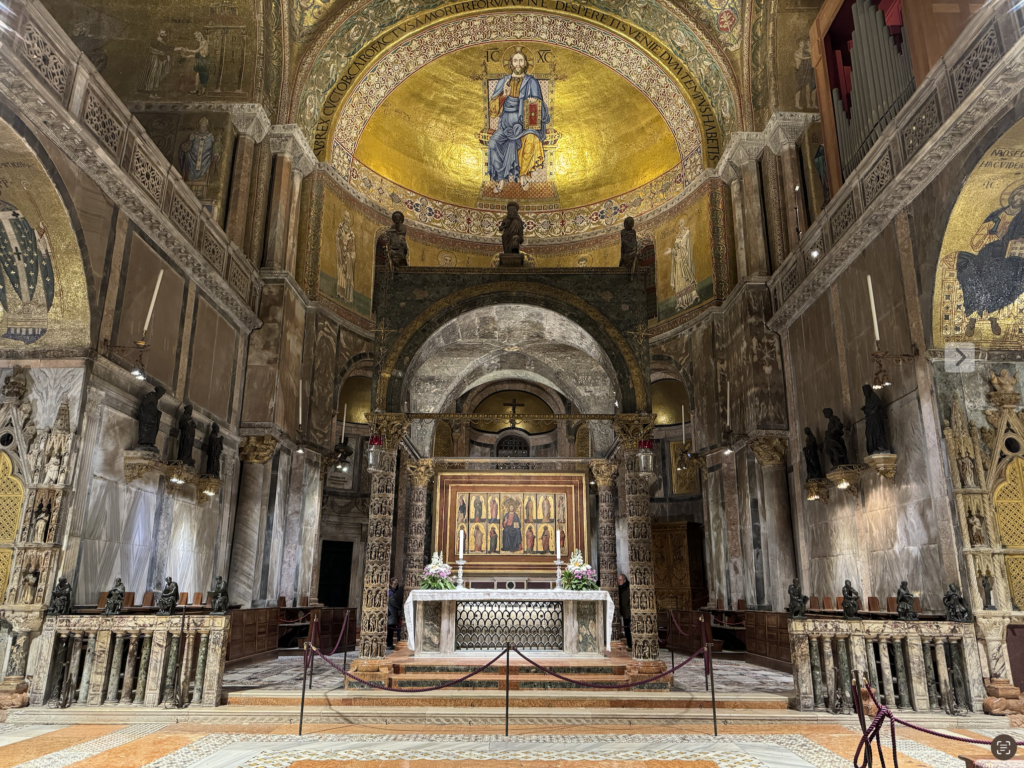
A particular highlight of the tour is a private visit after dark to St Mark’s Basilica to view the mosaics lit by arc lights. For one hour, we have the basilica to ourselves allowing us to view the tomb of St Mark, the crypt that lies under the high altar, and the fine Pala d’Oro – the crown jewels of St Mark’s – positioned behind the high altar.
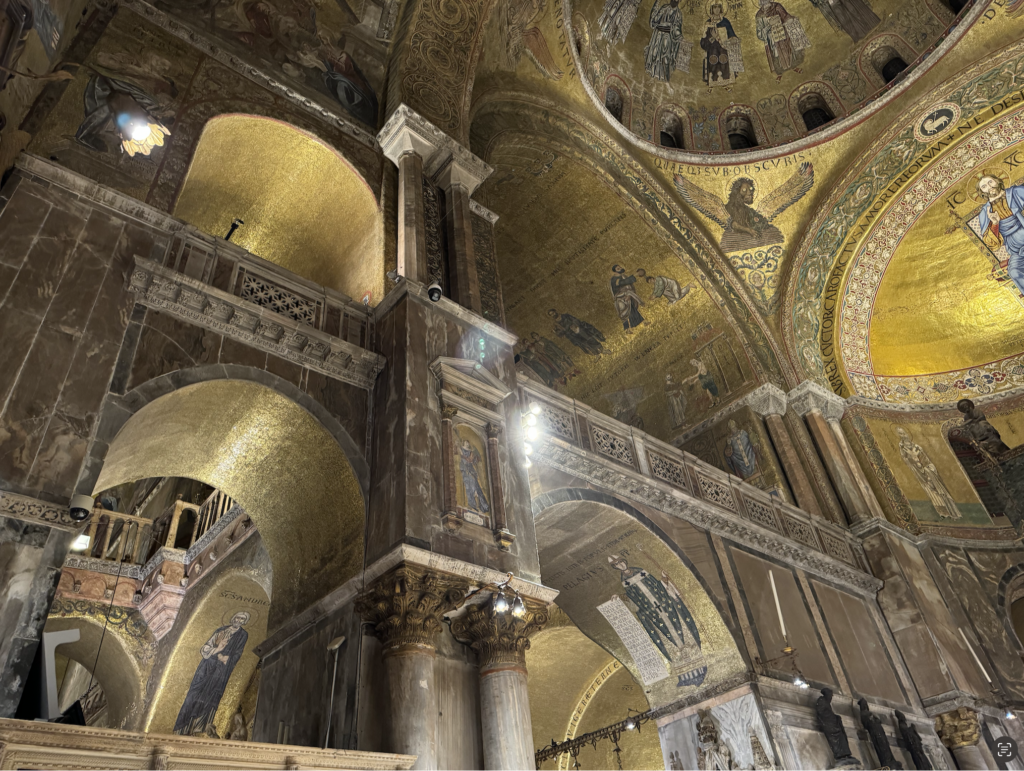
The choir lofts of St Mark’s Basilica.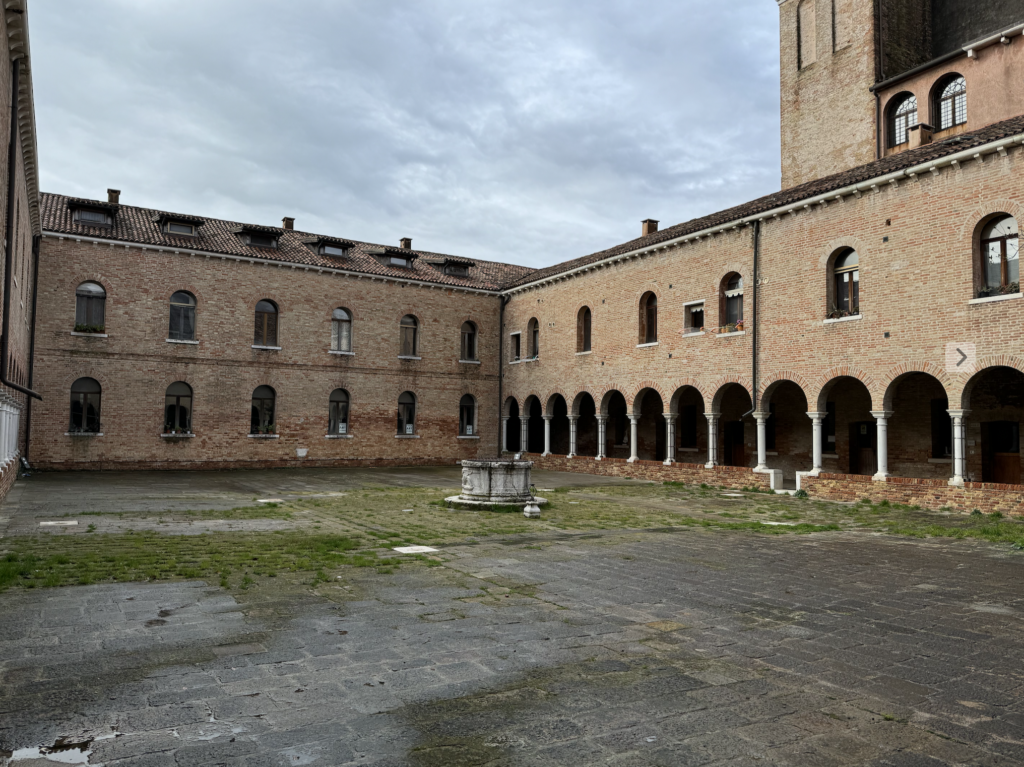
Usually not on most visitor’s itineraries of Venice, is the Giudecca island, but we will spend a morning here getting a feel for one of the most fascinating residential areas of Venice.
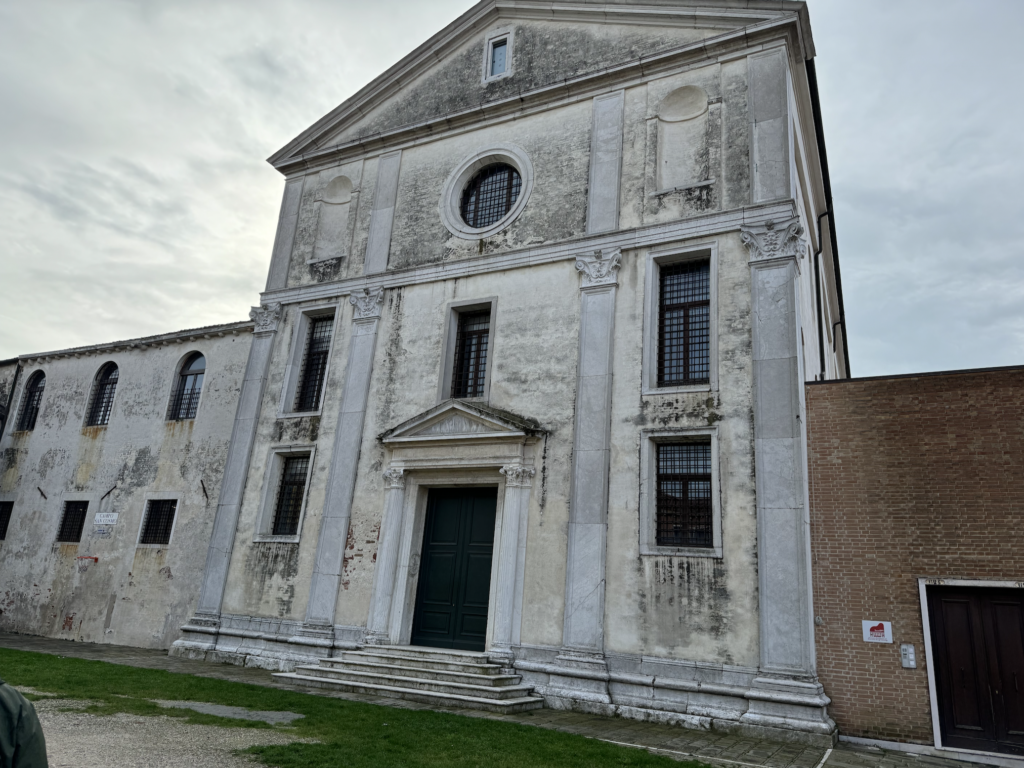
As this photograph shows, the Giudecca is less manicured than most parts of Venice, but it has a charm and an allure that warrants time spent there.
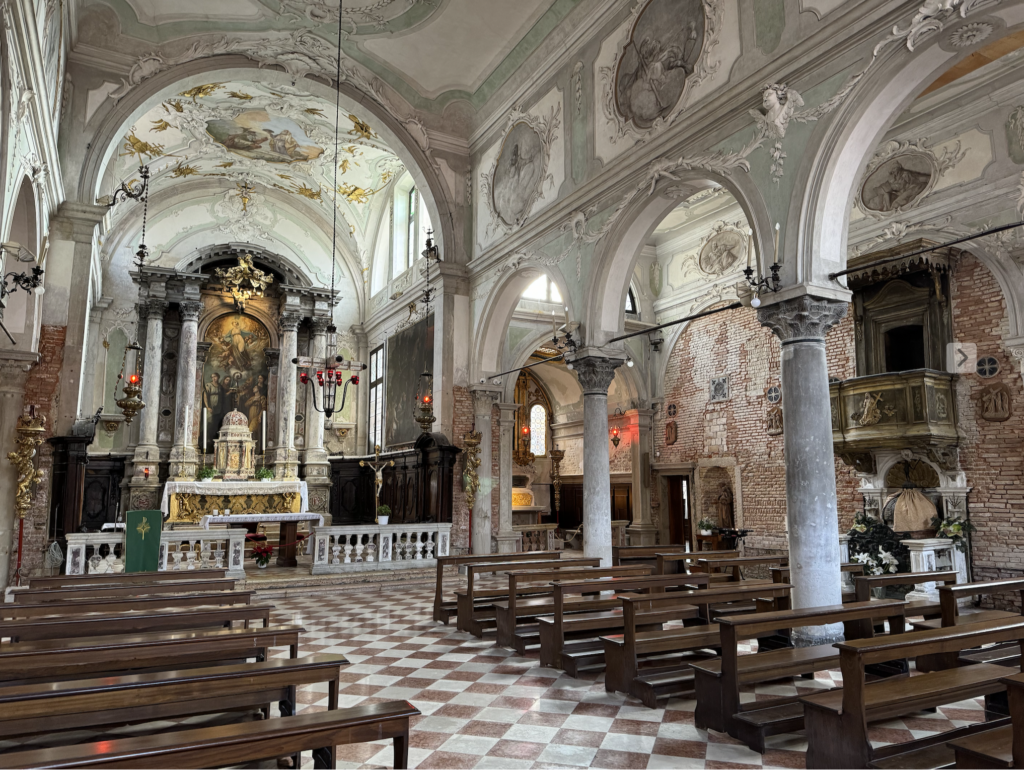
The church of Sant’Eufemia on the Giudecca was initially built in the 9th century in the Venetian-Byzantine style and today possesses one of the most engaging interiors of any Venetian Church.
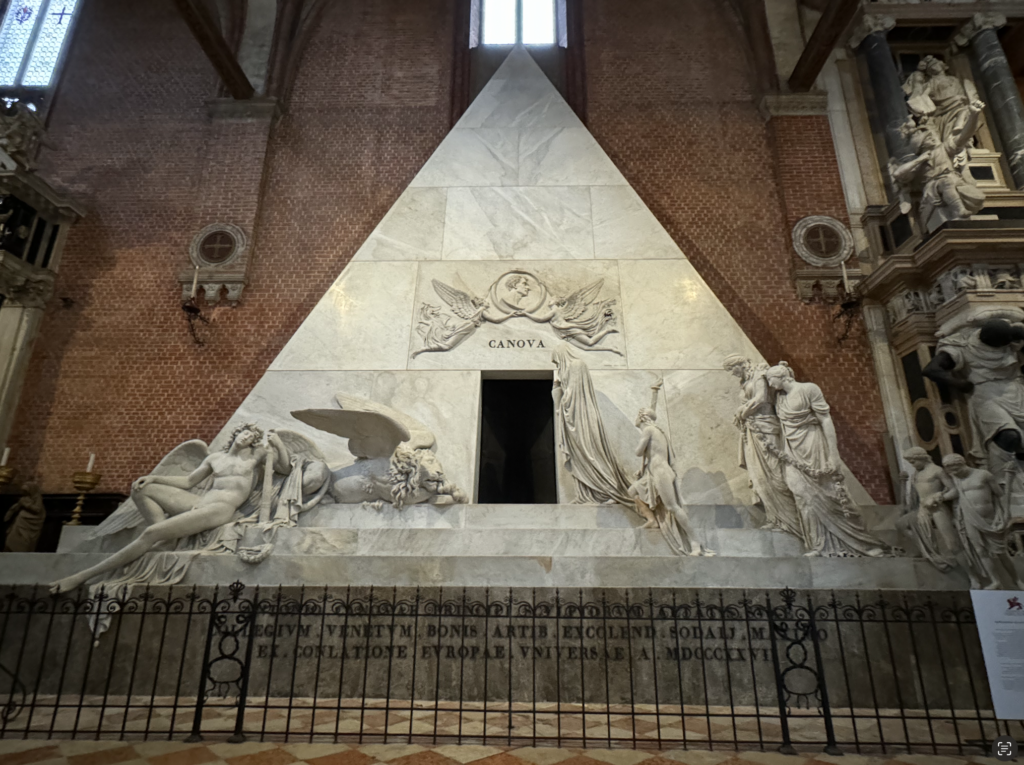
Towards the end of our week, we visit the Frari Church. This is the resting place of the great composer Claudio Monteverdi, as well as the symbolic resting place of the architect, Antonio Canova (Canova’s body was buried in Possagno, his hometown, while his heart was placed in an urn of porphyry kept at the Accademia in Venice).
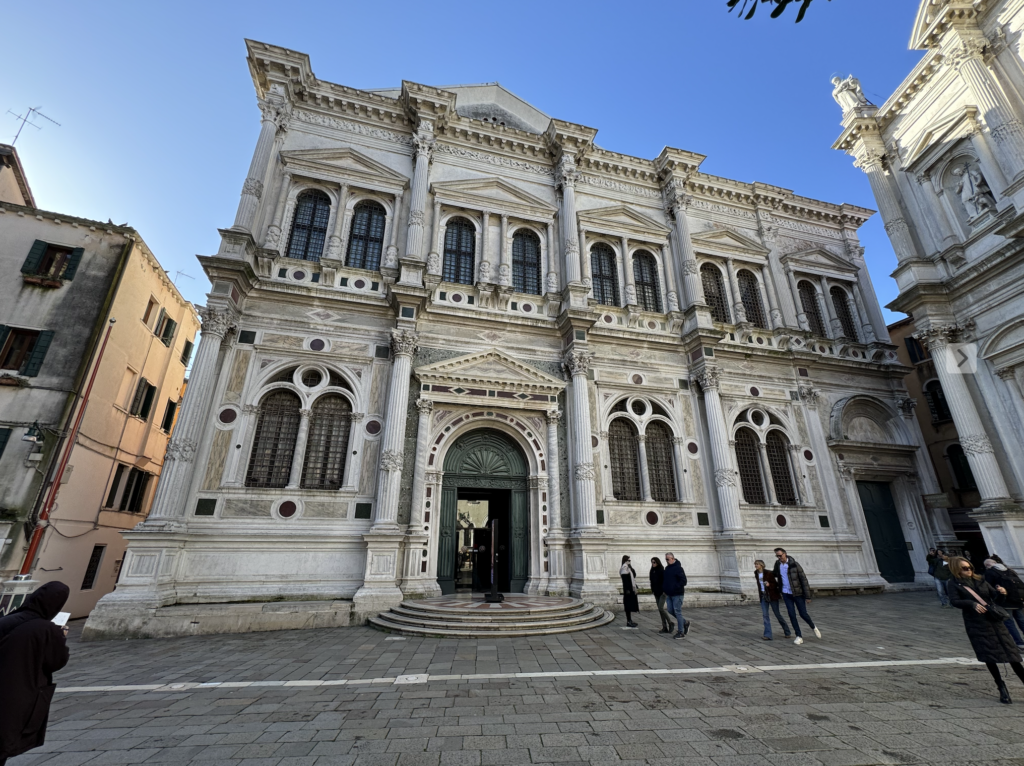
One of our final moments in Venice is a visit to the Scuola Grande di San Rocco, founded in 1478 and noted for its collection of oustanding paintings by Tintoretto.
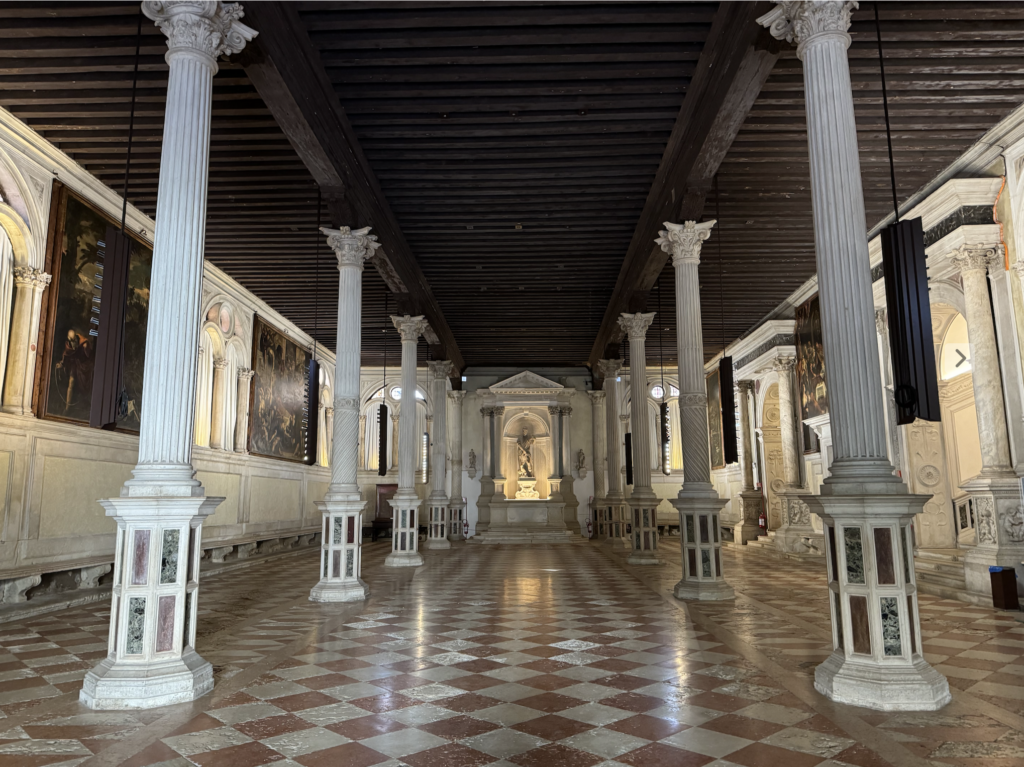
The entrance to the Scuola Grande di San Rocco.
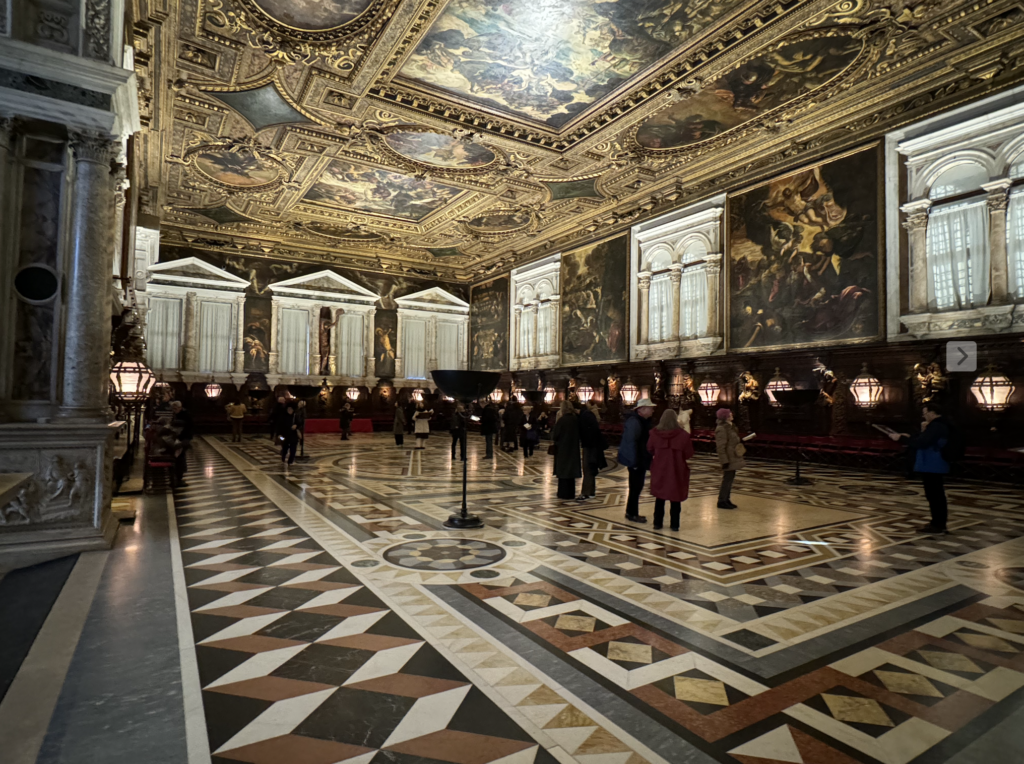
Our time in Venice ends with the enduring memory of the Scuola Grande di San Rocco’s Salone Maggiore, positioned on the first floor of the confraternity and decorated with the work of Tintoretto.
End of the tour


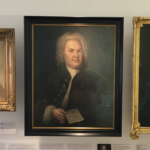

![The Scotish [sic] Gigg](https://petermedhurst.com/wp-content/uploads/2012/08/Peter120813untitled-shoot-2.jpg)